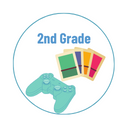The Active Classroom: Enhancing Learning Through Movement
In recent years, the traditional classroom setup has undergone a significant transformation with the emergence of the active classroom concept. Unlike conventional classrooms where students passively sit at their desks, an active classroom encourages movement, collaboration, and engagement throughout the learning process. This article explores the benefits, strategies, challenges, and success stories associated with implementing an active classroom environment.
Benefits of an Active Classroom
Improved Student Engagement
One of the primary benefits of an active classroom is the enhanced level of student engagement it fosters. By incorporating movement and interactive activities into lessons, educators can capture students' attention more effectively, leading to increased participation and interest in learning.
Enhanced Learning Outcomes
Research has shown that active learning environments promote deeper comprehension and retention of material compared to traditional methods. When students are actively involved in their learning through hands-on activities and discussions, they are more likely to grasp complex concepts and apply them in real-world scenarios.
Health Benefits
In addition to academic advantages, an active classroom also promotes physical health and well-being among students. Regular movement breaks and flexible seating arrangements help combat sedentary behavior and reduce the risk of health issues associated with prolonged sitting, such as obesity and cardiovascular disease.
Strategies for Creating an Active Classroom
Flexible Seating Arrangements
Gone are the days of rows of desks facing the front of the classroom. In an active classroom, furniture is arranged to facilitate collaboration and movement. Options may include standing desks, bean bag chairs, or even exercise balls, allowing students to choose seating that best suits their learning preferences.
Incorporating Movement Breaks
To prevent students from becoming restless or fatigued during long periods of instruction, teachers can integrate short movement breaks into their lessons. These breaks may involve simple stretching exercises, dance breaks, or quick outdoor walks to refresh students' minds and bodies.
Interactive Learning Activities
Active classrooms emphasize hands-on, experiential learning activities that encourage exploration and discovery. From science experiments to group projects and simulations, these interactive experiences not only reinforce academic concepts but also promote teamwork, problem-solving, and critical thinking skills.
Implementing Technology in an Active Classroom
Interactive Whiteboards
Interactive whiteboards serve as valuable teaching tools in active classrooms, allowing educators to display multimedia content, annotate lessons in real-time, and facilitate interactive discussions. Students can actively participate by manipulating digital resources and collaborating with their peers.
Educational Apps and Software
With the proliferation of educational apps and software, teachers have access to a vast array of resources to enrich their lessons and engage students. Whether it's a language learning app, a virtual field trip simulation, or a math game, technology can enhance the learning experience and cater to diverse learning styles.
Online Collaboration Tools
In today's digital age, collaboration extends beyond the walls of the classroom. Online collaboration tools enable students to work together on projects, share ideas, and provide feedback in real-time, regardless of their physical location. Platforms such as Google Classroom, Microsoft Teams, and Zoom facilitate seamless communication and teamwork.
Overcoming Challenges in an Active Classroom
Classroom Management
Maintaining order and discipline in an active classroom requires effective classroom management strategies. Teachers must establish clear expectations, routines, and consequences for behavior while also allowing flexibility and autonomy within the learning environment.
Adapting to Different Learning Styles
Every student has unique learning preferences and strengths, so it's essential to cater to a variety of learning styles in an active classroom. By incorporating visual, auditory, kinesthetic, and tactile activities, educators can ensure that all students have opportunities to succeed and thrive.
Space Constraints
Limited classroom space can pose a challenge when implementing an active learning environment, especially in overcrowded or poorly designed facilities. Creative solutions such as utilizing outdoor spaces, rearranging furniture, or converting unused areas into learning zones can help maximize available space and create a more dynamic classroom environment.
Success Stories of Active Classrooms
Numerous schools and educators have embraced the active classroom model with remarkable results. From increased student attendance and academic achievement to positive changes in behavior and attitude, the impact of active learning environments is evident in classrooms around the world. By prioritizing student engagement, collaboration, and well-being, these success stories serve as inspiration for educators seeking to transform their own classrooms.
Conclusion
The active classroom represents a paradigm shift in education, placing emphasis on student-centered learning, collaboration, and movement. By implementing strategies such as flexible seating, interactive activities, and technology integration, educators can create dynamic learning environments that foster academic success and holistic development. Despite challenges such as classroom management and space constraints, the benefits of an active classroom far outweigh the obstacles, leading to improved student engagement, enhanced learning outcomes, and better overall well-being.
FAQs
-
What age groups are most suitable for an active classroom environment?
Active classrooms can benefit students of all ages, from kindergarten through college. However, educators may need to adapt activities and strategies to suit the developmental needs and abilities of different age groups.
-
How can teachers ensure that all students actively participate in classroom activities?
Encouraging active participation requires creating a supportive and inclusive learning environment where students feel comfortable expressing themselves. Teachers can use a variety of techniques, such as group work, peer collaboration, and differentiated instruction, to engage students and promote active involvement.
-
Are there any potential drawbacks to implementing an active classroom?
While the benefits of an active classroom are numerous, some challenges may arise, such as increased noise levels, distractions, and the need for additional planning and preparation. However, with proper support, training, and resources, these challenges can be overcome.
-
How can parents support the active classroom approach at home?
Parents play a crucial role in reinforcing the principles of active learning outside the classroom. Encouraging physical activity, providing opportunities for hands-on exploration, and engaging in open communication with teachers are all ways parents can support their child's learning journey.
-
What research supports the effectiveness of active learning environments?
Numerous studies have documented the positive effects of active learning on student engagement, achievement, and well-being. Researchers have found that incorporating movement, collaboration, and interactive activities into lessons can lead to improved academic outcomes and a more positive learning experience for students.
Multiplication Games | Addition Games| Subtraction Games | Telling Time Games | Fraction Games |
Kindergarten Math Games

Play free preschool and kindergarten math games for kids. Fun math activities for kindergarten
Go to page1st Grade Math Games

Math games for 1st grade students to play games and practice different math topics. Maths games for class 1
Go to page2nd Grade Math Games

2nd grade math games for kids to play and practice math problems. Maths games for 2nd class
Go to page3rd Grade Math Games

3rd grade math games for kids to play and practice math problems. Maths games for class 3
Go to page4th Grade Math Games

4th grade math games for kids to play and practice math problems. Fun math activities for 4th graders
Go to page5th Grade Math Games

5th grade math games for kids to play and practice math problems. Cool math games for 5th graders
Go to page6th Grade Math Games

6th grade math games for kids to play and practice math problems. Math jeopardy 6th grade.
Go to page7th Grade Math Games

7th grade math games for kids to play and practice math problems. Math games for grade 7
Go to page










